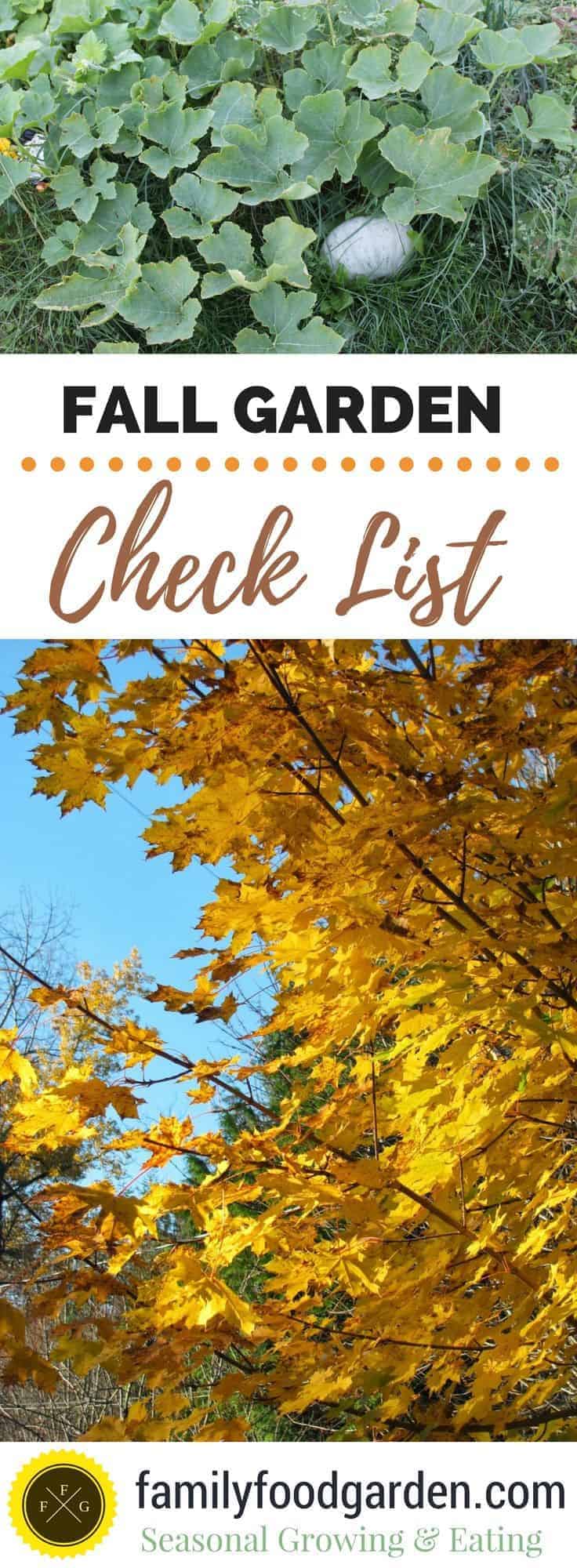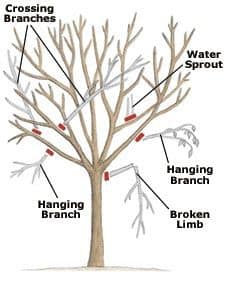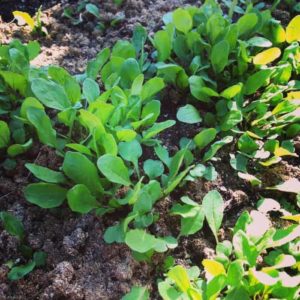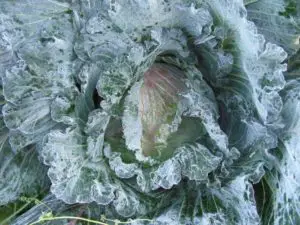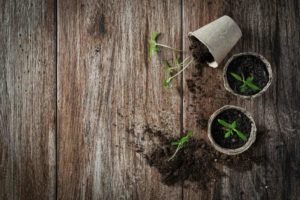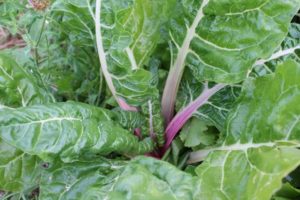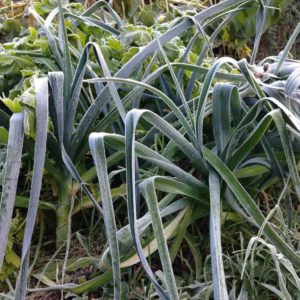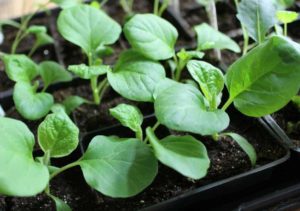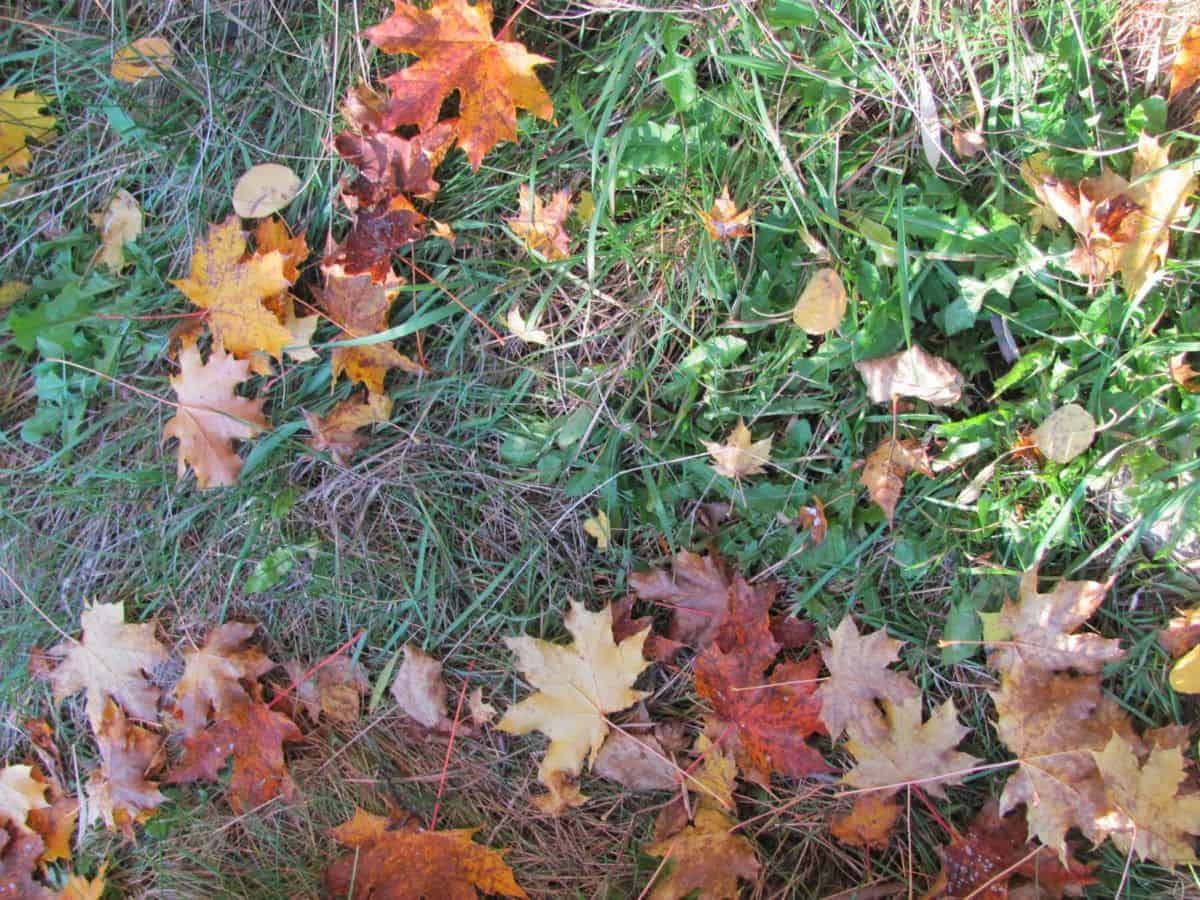
Fall gardening is about clean up, building soil and even more growing.
As fall approaches and the cold air sets in you might start getting frosts, or even a dash of early snow. It’s the end of the gardening season, tools need to be put away, soil amended and the last of the crops harvested.
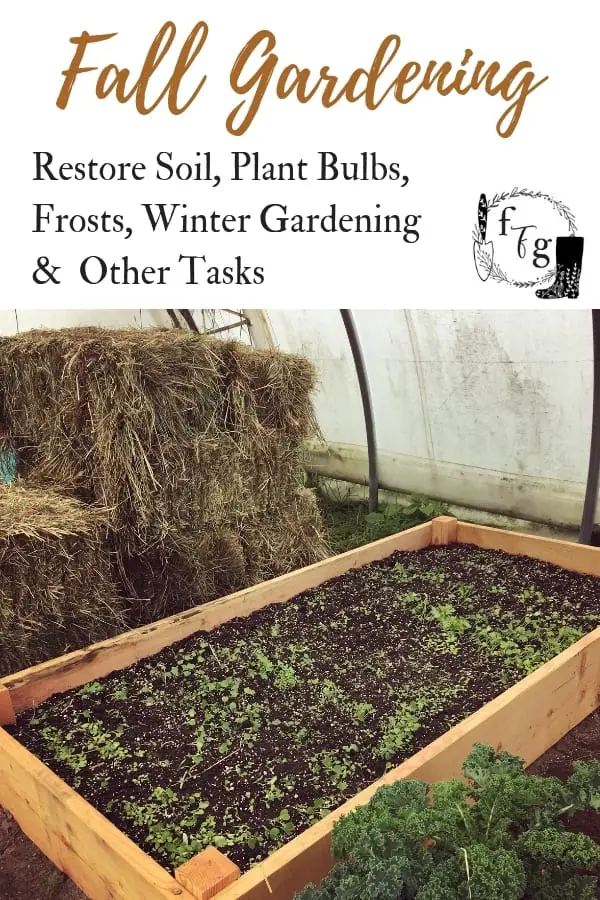
Fall gardening, are you resting or growing?
If you get excited about gardening like me, I stretch my garden into the fall and winter for more vegetables. For many gardeners however fall and winter is the perfect time to take a break, write a garden journal, put those rubber boots to rest and do some garden planning with my gardening book for next season.
Gardening Check List for Fall
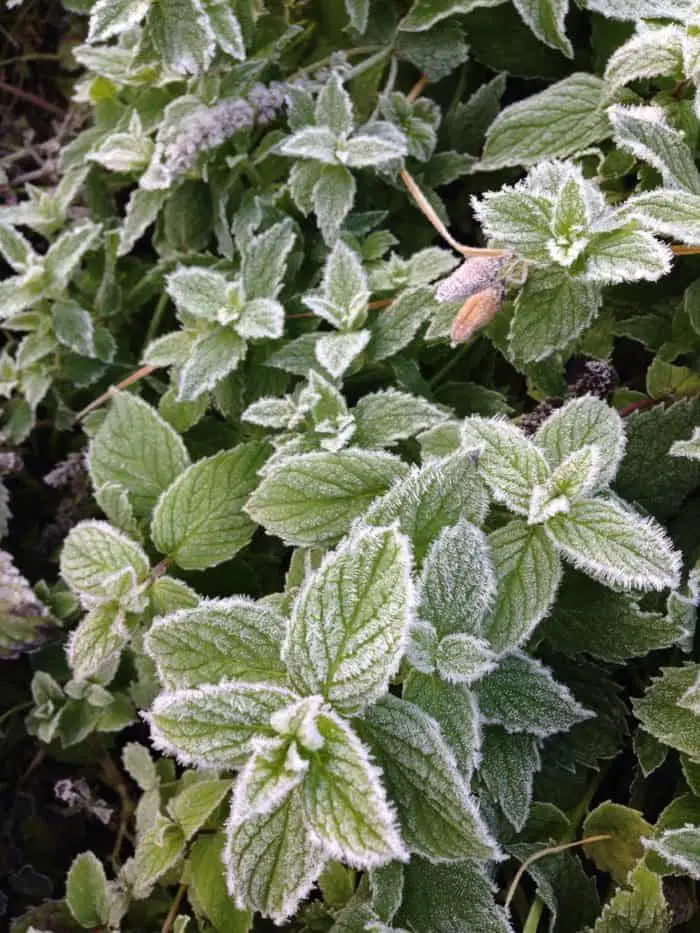
Fall garden to do list
- Rake and collect leaves. Read the ‘Restoring Soil Fertility’ section below to learn how to use free leaves to build fantastic soil.
- Mulch your crops like garlic, or fall crops that you want to harvest in the winter months. There are plenty of different types of garden mulches like straw, hay, or wood chips that will help your crops during the cold winter months.
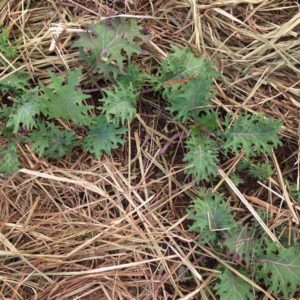
- Plant your garden bulbs like flowers and garlic. I also like to plant fast growing fall crops for overwintering or a winter harvest.
- Harvest: did you know there are crops you can harvest in the frost and snow? Crops like pumpkins and squash you’ll need to field cure before storing. Certain crops you can ripen on the vine before your frosts, others you can bring inside (think green tomatoes) and ripen indoors.
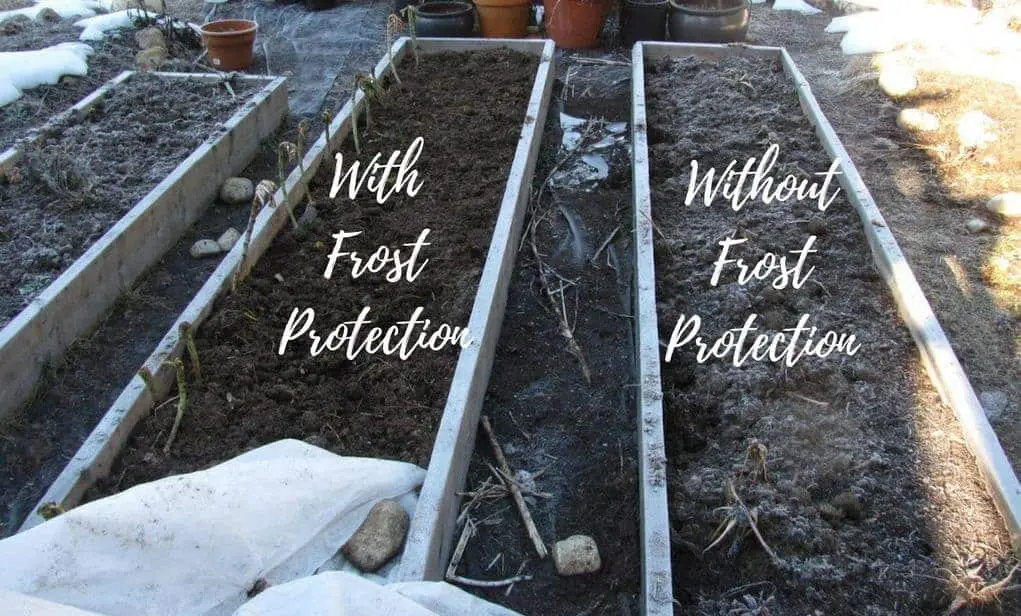
- Get ready for frosts. You might be checking the weather daily waiting for those nighttime lows that indicate a mad dash to harvest the last of the summer crops. Warm season crops are the ones that can’t handle frosts so you need them out of the ground in time so they aren’t damaged. There are many crops that can handle frosts and snow. You can also use row covers to protect crops from frosts.
- Put up your season extenders. Low tunnels, heavy weight row cover for frosts or cold frames are great for adding weeks or months to your growing season. You can use season extenders polytunnel greenhouses, low tunnels, unheated greenhouses or using frost fabric.
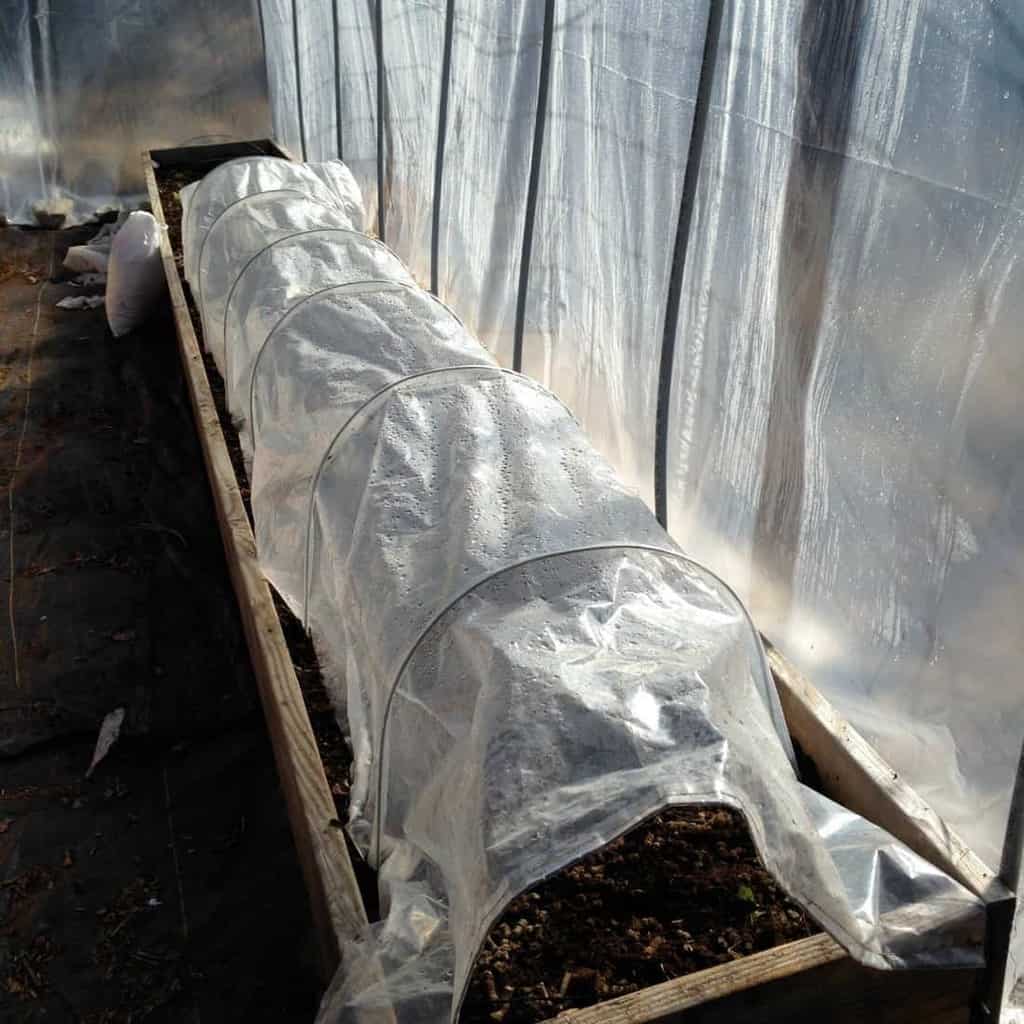
- Planting: Many spring flowering bulbs, garlic and Jerusalem artichokes are planted in the fall.
- Pruning: Prune tips & photos from Daves Garden
-
- Sow cover crops: One fall crop that you might not think of when planning your fall garden is growing cover crops and green manures for next season. Although you might not eat any of these crops (although the mustard greens we ate!), they’re important to grow to restore depleted nutrients in the soil, help to suppress weeds and help reduce soil erosion. Mother Earth News has this great article on why cover crops are great for your soil.
- Garden tool clean up:
Clean tools thoroughly before putting them away for the winter. Wash off caked dirt, and coat both metal parts to prevent rusting, and add linseed oil to wooden handles to keep them from drying out and cracking. Double check what you used this season to see if any needs replacing over the winter.
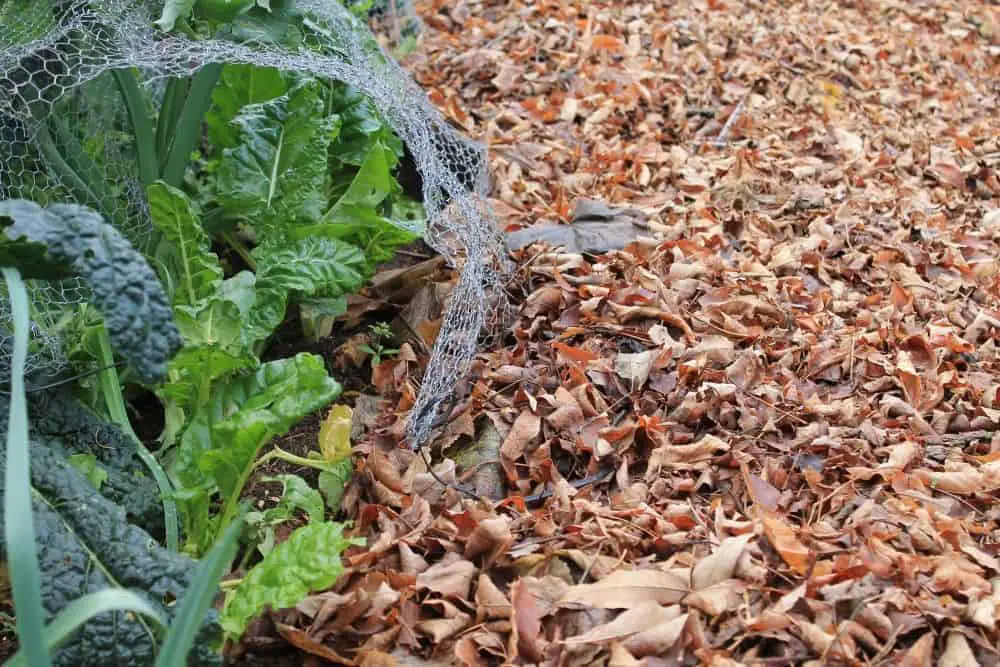
Restoring Soil Fertility for Next Season
Here’s some tips on how to get your garden beds ready for next season. I love using mulch in the garden to help build up soil.
- Cover Crop Guide
- Putting Your Vegetable Beds to Bed
- What a Load of Manure
- Making a Leaf Mold Blanket
- Use Cover Crops to Improve Your Soil
- Green Manure Crops
- Clean Up Your Garden by Free-Ranging Your Chickens
- Putting the Garden to Bed
- Fall: The Perfect Time to Build Healthy Soil
- Fall Leaves: A Valuable Soil Builder
